Do you have a question about the Sony Bravia KDL-55W802A and is the answer not in the manual?
Explains how to operate the TV using navigation and function buttons on the remote control.
Describes the main menu interface and its categories for accessing functions and content.
Details how to adjust picture settings like brightness, contrast, and color for optimal viewing.
Guides on connecting to the internet and accessing online services and applications via the TV.
Explains methods for searching and navigating within the on-screen i-Manual.
Describes how to quickly access screen-specific functions using the OPTIONS button.
Instructions on how to experience 3D content, including viewing modes and glasses.
How to connect and enjoy content from external devices like BD players or cameras.
Details the sensors, illumination LED, and other components located on the front of the TV.
Describes the ports and controls found on the right side of the TV.
Details the connectors and inputs located on the bottom of the TV.
Explains the various ports and connections available on the rear of the TV.
Describes the buttons and functions located on the top of the remote control.
Details the buttons on the upper part of the remote control for connected devices and i-Manual.
Explains the function of buttons in the middle section of the remote control.
Describes the function of buttons in the lower section of the remote control, including number keys.
How to display and use the on-screen keyboard with the remote control.
Covers methods for selecting TV channels using the Home Menu and buttons.
Details how to tune channels using the channel up/down buttons.
Explains how to directly select channels using the number pad on the remote.
How to display two pictures simultaneously, like Picture-in-Picture (PIP).
Instructions for displaying two pictures side-by-side (P&P).
How to show current channel, program, and input information on the screen.
How to turn on or off subtitles and closed captions for programs.
Options for adjusting the picture aspect ratio and screen size.
Settings for adjusting sound reception for analog TV channels.
How to connect external devices using an HDMI cable for optimal picture quality.
Steps for connecting devices using component video and audio cables.
How to connect devices using composite video and audio cables.
Connecting cameras and camcorders via HDMI to view photos and videos.
How to connect USB storage devices to play media files.
Connecting a PC to the TV via HDMI for display and content playback.
Connecting an audio system via HDMI for sound output.
How to connect an audio system using an optical audio cable.
Connecting an audio system using standard audio cables.
Connecting mobile devices via MHL to the TV's HDMI port.
Information on supported file formats for media playback via DLNA/USB.
How to enable and configure BRAVIA Sync for device control.
Navigating the Sync Menu to control connected BRAVIA Sync devices.
Customizing TV remote buttons to control connected HDMI/MHL devices.
How to view a list of connected BRAVIA Sync-compatible devices.
Choosing preset picture and sound modes based on content type.
Enables automatic adjustment of screen brightness based on room lighting.
How to add frequently used channels or applications to a favorites list for quick access.
Reduces power consumption by adjusting the picture brightness settings.
Optimizes power usage by automatically adjusting backlight brightness based on scene.
Sets the TV to automatically turn off after a period of inactivity.
Configures the TV to turn off automatically when no input signal is detected.
How to manually set the TV's internal clock if automatic time sync fails.
Schedules the TV to turn on automatically at a specific time.
Sets the TV to automatically turn off after a preset duration.
Displays photos from USB or network devices as a screensaver.
Establishes a 4-digit password to manage parental control settings.
Locks content based on age ratings or content suitability.
How to block specific TV channels by their number.
Steps for establishing a wired or wireless internet connection for the TV.
How to use the TV's built-in browser to access websites.
Accessing and viewing online video content and streaming services.
Setting up and using Skype for video calls and communication.
Searches for information related to content currently being watched.
Performing searches using keywords to find TV programs, music, or videos.
Streaming media files from a PC on the home network to the TV.
Configuring network settings for renderer functions and device access.
Playing media files from a controller device via the renderer function.
Controlling the TV using a mobile device with the TV SideView app.
Connecting devices directly to the TV via Wi-Fi without a router.
Achieving screen mirroring by touching a compatible device to the remote control.
Displaying the screen of a mobile device on the TV using Miracast technology.
Settings for picture mode, adjustments, locking, and screen size/position.
Adjustments for sound modes, equalizer, voice settings, and volume.
Managing signal reception, tuning, editing labels, and fine-tuning channels.
Configuration for information banners and closed caption display.
Controls for remote tones, startup logo, illumination, language, region, and device connections.
Options for routing sound to TV speakers, headphones, or audio systems.
Managing external inputs, switching video sources, and detailed input settings.
Accessing Sony contact information and product support resources.
Procedures for updating TV software and broadcast services.
Addresses issues with the TV turning on or off automatically.
Solutions for common display issues like black dots, distortion, or flickering.
Troubleshooting steps for poor reception, noisy pictures, or missing channels.
Resolves issues related to 3D display, weak effects, or black bars.
Fixes problems like no sound, audio noise, or distorted sound output.
Addresses issues with connected devices not displaying or being recognized.
Solves problems with poor streaming, connection failures, or inaccessible apps.
Troubleshoots issues with connecting to servers or displaying media files.
Fixes problems where the remote control is unresponsive or not operating correctly.
Addresses issues with the one-touch remote not operating or draining batteries quickly.
Solves problems with Bluetooth mouse connectivity or operation.
Troubleshoots issues with screen mirroring, connectivity, or content playback.
Resolves problems with one-touch mirroring not working or devices not being recognized.
Addresses issues with the TV SideView app not controlling the TV or connecting properly.
Troubleshoots problems connecting to a wireless router or access point at 5GHz.
Contains general notes and refers to the built-in i-Manual for more details.
Explains how to save frequently viewed pages in the manual for quick access.
| Comb filter | 3D |
|---|---|
| Display diagonal | 55 \ |
| Native aspect ratio | 16:9 |
| LED backlighting type | Edge-LED |
| Supported video modes | 1080i, 1080p, 480i, 480p, 720i, 720p |
| Contrast ratio (dynamic) | 1000000:1 |
| Display diagonal (metric) | 138.8 cm |
| 3D type | Passive |
| 3D glasses quantity | 4 |
| Supported file systems | exFAT, FAT16, FAT32, NTFS |
| Teletext function | - |
| Tuner type | Analog & digital |
| Supported TV bands | CATV, UHF, VHF |
| Analog signal format system | NTSC |
| Digital signal format system | ATSC |
| Audio system | Dolby Digital, Dolby Digital Plus, Dolby Pulse |
| RMS rated power | 20 W |
| Number of speakers | 2 |
| DVI port | No |
| DVI-D ports quantity | 0 |
| USB 2.0 ports quantity | 3 |
| Component video (YPbPr/YCbCr) in | 1 |
| Smart modes | Cinema, Game, Photo, Sports, Standard, Vivid |
| Lifestyle apps | Skype |
| Product color | Black |
| Power consumption (max) | 146 W |
| Power consumption (standby) | 0.057 W |
| Power consumption (typical) | 59.25 W |
| Sustainability certificates | ENERGY STAR |
| Package depth | 170 mm |
| Package width | 1487 mm |
| Package height | 836 mm |
| Package weight | 26000 g |
| Depth (with stand) | 298 mm |
|---|---|
| Height (with stand) | 768 mm |
| Weight (with stand) | 20700 g |
| Depth (without stand) | 64 mm |
| Width (without stand) | 1253 mm |
| Height (without stand) | 735 mm |
| Weight (without stand) | 18400 g |
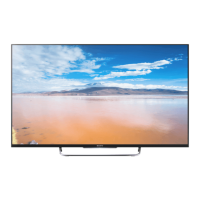



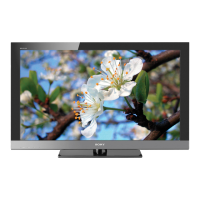



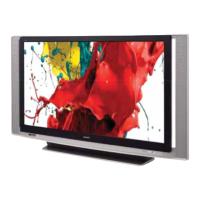

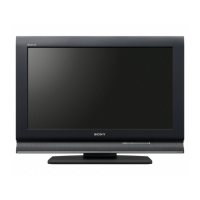
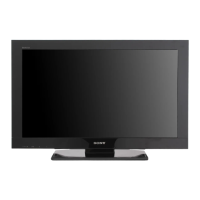
